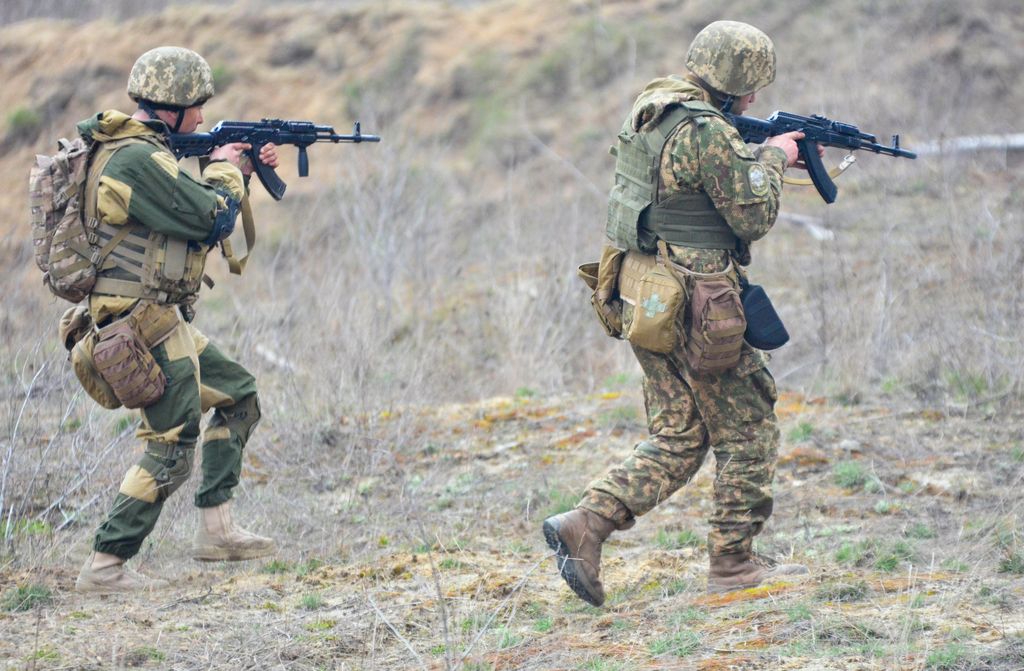
As the protracted conflict in Ukraine continues, Ukrainian forces have reportedly unveiled an innovative approach to counter the persistent threat of Russian drones. This novel strategy involves transforming a decades-old agricultural aircraft, a Czechoslovakian-made Zlin Z-137 Agro Turbo crop duster, into an air defense system by equipping it with air-to-air missiles. This development highlights Ukraine’s ongoing ingenuity in adapting to modern wartime challenges.
Video footage, briefly circulated on Telegram channels, depicts the Zlin Z-137 Agro Turbo aircraft with two R-73 air-to-air missiles secured beneath its wings. While the visual evidence offers a glimpse into this unconventional modification, details remain limited regarding the exact number of these planes in use or their precise effectiveness against Russian drones.
Nevertheless, this adaptation marks a significant departure from conventional military hardware, underscoring Ukraine’s continued innovations in confronting contemporary threats like unmanned aerial vehicles. The appearance of such a repurposed aircraft points to a broader pattern of extemporized solutions in the face of ongoing combat.
The Z-137 Agro Turbo, a turboprop-powered aircraft, is seen in the circulating video swooping low over what appears to be a Ukrainian cornfield, reminiscent of its traditional agricultural role. However, its new military-style dull gray paint scheme, complete with white identification stripes on the rear fuselage to mitigate friendly fire risks, clearly signals its re-purposed function.
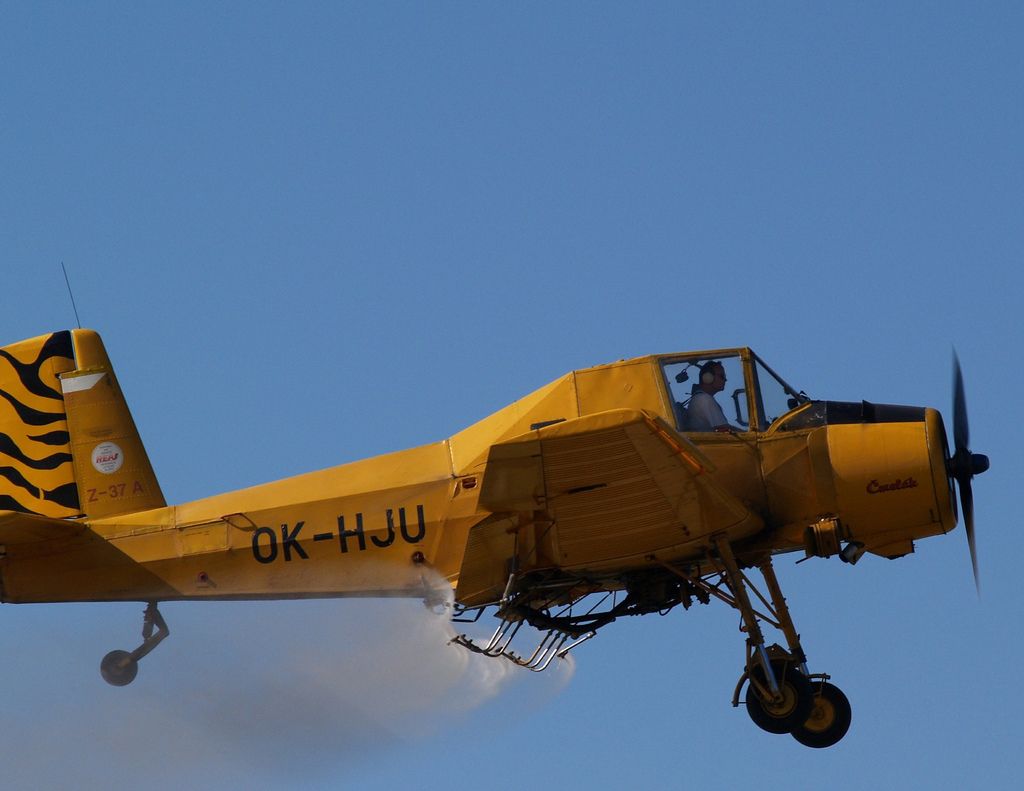
This aircraft is the ultimate development of the Zlin Z-37 Čmelák, which first flew in 1963. The Z-137 variant replaced the original Soviet-built Ivchenko radial piston engine with a Walter M-601B turboprop, enhancing its performance and efficiency. Over 700 units of all variants were manufactured until the mid-1980s, seeing extensive service across the Eastern bloc, particularly on expansive collective farms.
The choice of the Z-137 offers several practical advantages in the current conflict. Unlike sophisticated F-16 fighter jets, a crop duster is a low-tech platform, making it less vulnerable to electromagnetic jamming. Its design inherently allows it to fly low and close to the ground, a characteristic that makes it ideally suited for targeting Russian drones engaged in reconnaissance or attacking Ukrainian positions.
This isn’t the first instance of an armed crop duster emerging in modern warfare, but the Z-137’s straightforward conversion into a military asset stands out. In contrast, the U.S. Air Force Special Operations Command (AFSOC) uses the OA-1K Skyraider II, a militarized derivative of the Air Tractor AT-802 crop duster, developed as part of a multi-billion dollar project with combat operations and close air support in mind. The Ukrainian Z-137, by comparison, fills a distinct and more niche role as a drone-killer.
Since the war began in 2022, Ukrainian forces have frequently relied on “McGyvered” weapons systems and unconventional tactics. Advanced drones and electromagnetic warfare units are deployed from World War I-style trenches, while machine guns from a century ago provide covering fire, illustrating a blend of eras in combat.
Military equipment: Zlin Z-37 Čmelák
Name: Z-37 Čmelák
Caption: UK-registered Z-37A-2
Type: Agricultural aircraft
Manufacturer: Let Kunovice,Moravan
FirstFlight: 29 June 1963
Status: In use
PrimaryUser: Czechoslovak civilian aviation
Produced: 1965-1987
NumberBuilt: ~713
Categories: 1960s Czechoslovak agricultural aircraft, Aircraft first flown in 1963, Aircraft specs templates using more performance parameter, Aircraft with fixed conventional landing gear, All articles needing additional references, All articles with dead external links, All articles with unsourced statements, All articles with vague or ambiguous time, Articles needing additional references from August 2025, Articles with dead external links from July 2016, Articles with permanently dead external links, Articles with short description, Articles with unsourced statements from August 2025, CS1 German-language sources (de), CS1 maint: url-status, Commons category link is on Wikidata, Glider tugs, Low-wing aircraft, Short description is different from Wikidata, Single-engined piston aircraft, Single-engined tractor aircraft, Vague or ambiguous time from August 2025, Webarchive template wayback links, Zlín aircraft
Summary: The Zlin Z-37 Čmelák (Czech: “Bumblebee”), also known as LET Z-37 Čmelák is an agricultural aircraft which was manufactured in Czechoslovakia. It is powered by a Soviet-built Ivchenko reciprocating engine. The aircraft is used mainly as a cropduster.
Get more information about: Zlin Z-37 Čmelák
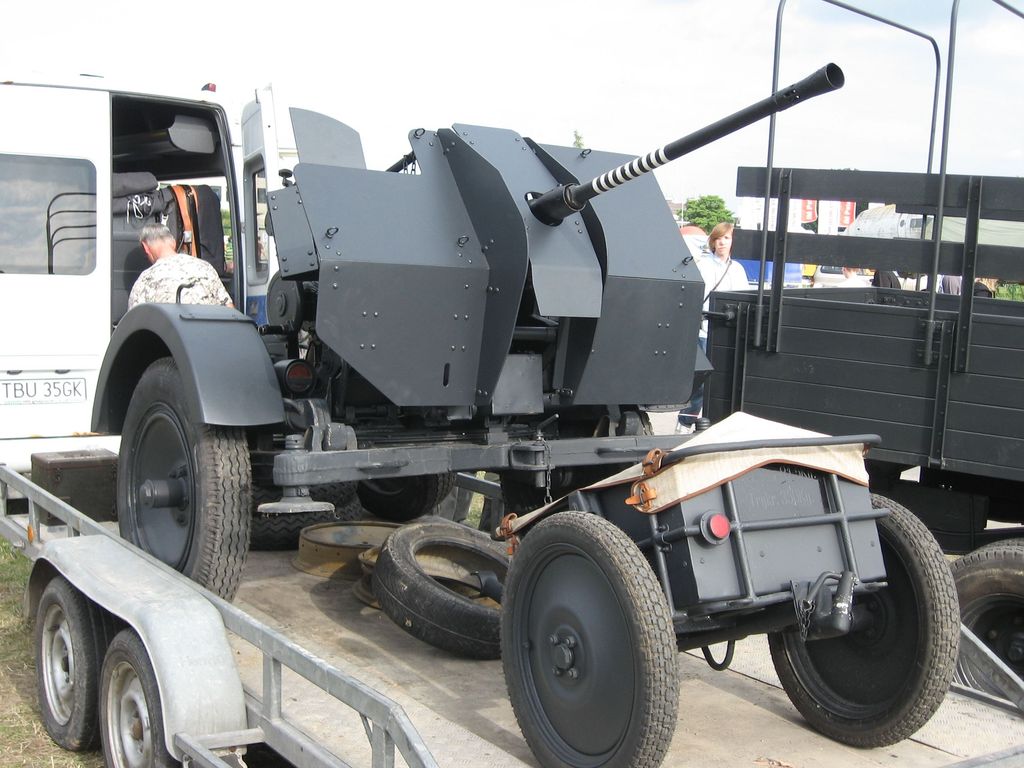
To combat drones, Ukrainian forces have employed various ad-hoc anti-air rigs, ranging from bundled Kalashnikovs to commercial quadcopters engaged in dogfights against first-person view drones. The missile-armed crop duster fits neatly within this spectrum, combining a decades-old agricultural airframe with contemporary weaponry to address modern threats.
The concept draws parallels to the “humble technical,” a civilian pickup truck or SUV modified with a machine gun or anti-tank missile. These modifications are often simple, requiring less advanced training and proving more cost-effective. The Z-137, in essence, functions as an “aerial technical,” offering a relatively inexpensive anti-drone solution.
The primary armament for these modified Z-137s is the Vympel R-73 missile, known to NATO as the AA-11 Archer. This short-range, infrared-guided air-to-air missile, developed in the Soviet Union and in service since 1984, is a versatile weapon that has become a popular interceptor for various improvised Ukrainian air defense systems.
In its air-launched configuration from fighter jets, the R-73 boasts a maximum range of 18.6 miles against a head-on target and 8.7 miles against a tail-on target. It is a high-off-boresight (HOBS) weapon, meaning its seeker can articulate significantly, enabling engagements against targets with off-boresight angles of up to +/-75 degrees when paired with a helmet-mounted sight.
Military equipment: AK-47
Name: AK-47
Caption: AK-47 Type 2A
Origin: Soviet Union
Type: Assault rifle
IsRanged: Yes
Service: 1949–1974 (Soviet Union),1949–present (other countries)
UsedBy: #Users
Wars: #Conflicts
Designer: Mikhail Kalashnikov
DesignDate: Tue Dec 31 1946 16:00:00 GMT-0800 (Pacific Standard Time)
Manufacturer: Kalashnikov Concern
ProductionDate: 1948–present
Number: ~100 million
Variants: #Variants
SpecLabel: AK-47 with Type 3 receiver
Weight: 3.47 kg
Abbr: on
Length: 880 mm
PartLength: 415 mm
Cartridge: 7.62×39mm
Action: Gas-operated reloading,gas-operated reloading#Long-stroke,closed bolt,rotating bolt
Rate: Cyclic rate:,600 rounds/min,Practical rate:,Semi-automatic: ,40 rounds/min,Bursts/ Fully automatic: ,100 rounds/min
Velocity: 715 m
Range: 350 m
Feed: drum magazine,magazine (firearms)
Sights: iron sights
Categories: 7.62×39mm assault rifles, All articles containing potentially dated statements, All articles needing additional references, All articles with dead external links, All articles with unsourced statements, Articles containing Russian-language text, Articles containing potentially dated statements from 2004, Articles needing additional references from July 2018, Articles needing additional references from May 2024, Articles with dead external links from August 2023, Articles with dead external links from March 2025, Articles with permanently dead external links, Articles with short description, Articles with unsourced statements from August 2021, Assault rifles of the Soviet Union, CS1: unfit URL, CS1 Finnish-language sources (fi), CS1 French-language sources (fr), CS1 Russian-language sources (ru), CS1 Serbian-language sources (sr), CS1 Spanish-language sources (es), CS1 maint: bot: original URL status unknown, CS1 maint: numeric names: authors list, CS1 uses Russian-language script (ru), Infantry weapons of the Cold War, Kalashnikov Concern products, Kalashnikov derivatives, Long stroke piston firearms, Pages using Sister project links with default search, Rifles of the Cold War, Short description is different from Wikidata, Use dmy dates from February 2020, Weapons and ammunition introduced in 1947, Wikipedia articles needing page number citations from August 2022, Wikipedia articles needing page number citations from February 2013, Wikipedia indefinitely semi-protected pages
Summary: The AK-47, officially known as the Avtomat Kalashnikova (Russian: Автомат Калашникова, lit. ’Kalashnikov’s automatic [rifle]’; also known as the Kalashnikov or just AK), is an assault rifle that is chambered for the 7.62×39mm cartridge. Developed in the Soviet Union by Russian small-arms designer Mikhail Kalashnikov, it is the originating firearm of the Kalashnikov (or “AK”) family of rifles. After more than seven decades since its creation, the AK-47 model and its variants remain one of the most popular and widely used firearms in the world. Design work on the AK-47 began in 1945. It was presented for official military trials in 1947, and, in 1948, the fixed-stock version was introduced into active service for selected units of the Soviet Army. In early 1949, the AK was officially accepted by the Soviet Armed Forces and used by the majority of the member states of the Warsaw Pact. The model and its variants owe their global popularity to their reliability under harsh conditions, low production cost (compared to contemporary weapons), availability in virtually every geographic region, and ease of use. The AK has been manufactured in many countries and has seen service with armed forces as well as irregular forces and insurgencies throughout the world. As of 2004, “of the estimated 500 million firearms worldwide, approximately 100 million belong to the Kalashnikov family, three-quarters of which are AK-47s. The model is the basis for the development of many other types of individual, crew-served, and specialized firearms.
Get more information about: AK-47
Read more about: Ukrainian Strikes Target Russian Rail Logistics as Armored Trains Reappear in Conflict Zones
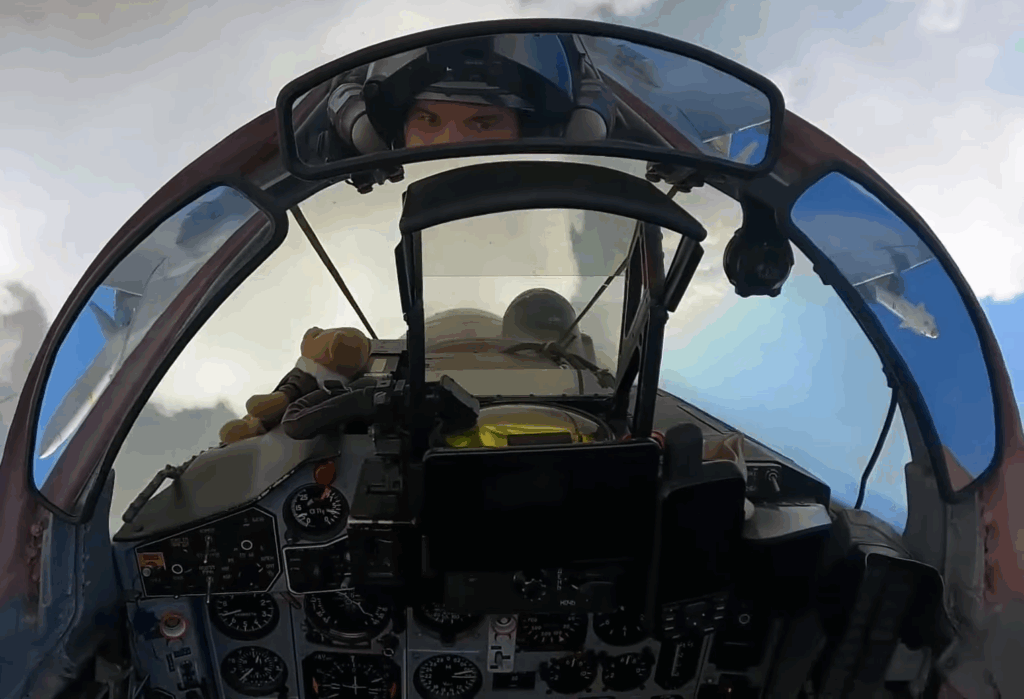
While the Z-137’s launch rails appear to be the standard APU-73 adapters for the R-73, it is not immediately clear how the pilot would acquire and target aerial threats without an obvious onboard sensor system. Integration of the missile without a helmet-mounted sight is feasible, though it would limit the missile to a fixed field of view, requiring the aircraft to maneuver the target into that window.
However, Ukraine has considerable experience with improvised air defense solutions. Future integration of a targeting system, such as a forward-looking infrared (FLIR) sensor, could provide day and night search and targeting capabilities, enhancing the aircraft’s operational scope.
This armed agricultural plane exemplifies Ukraine’s strategy of leveraging existing capabilities, including civilian assets, to rapidly bolster its much-needed air defenses. The Z-137/R-73 combination is primarily intended to counter Russian long-range kamikaze drones like the Shahed/Geran-2 types.
Military equipment: Zlin Z-37 Čmelák
Name: Z-37 Čmelák
Caption: UK-registered Z-37A-2
Type: Agricultural aircraft
Manufacturer: Let Kunovice,Moravan
FirstFlight: 29 June 1963
Status: In use
PrimaryUser: Czechoslovak civilian aviation
Produced: 1965-1987
NumberBuilt: ~713
Categories: 1960s Czechoslovak agricultural aircraft, Aircraft first flown in 1963, Aircraft specs templates using more performance parameter, Aircraft with fixed conventional landing gear, All articles needing additional references, All articles with dead external links, All articles with unsourced statements, All articles with vague or ambiguous time, Articles needing additional references from August 2025, Articles with dead external links from July 2016, Articles with permanently dead external links, Articles with short description, Articles with unsourced statements from August 2025, CS1 German-language sources (de), CS1 maint: url-status, Commons category link is on Wikidata, Glider tugs, Low-wing aircraft, Short description is different from Wikidata, Single-engined piston aircraft, Single-engined tractor aircraft, Vague or ambiguous time from August 2025, Webarchive template wayback links, Zlín aircraft
Summary: The Zlin Z-37 Čmelák (Czech: “Bumblebee”), also known as LET Z-37 Čmelák is an agricultural aircraft which was manufactured in Czechoslovakia. It is powered by a Soviet-built Ivchenko reciprocating engine. The aircraft is used mainly as a cropduster.
Get more information about: Zlin Z-37 Čmelák
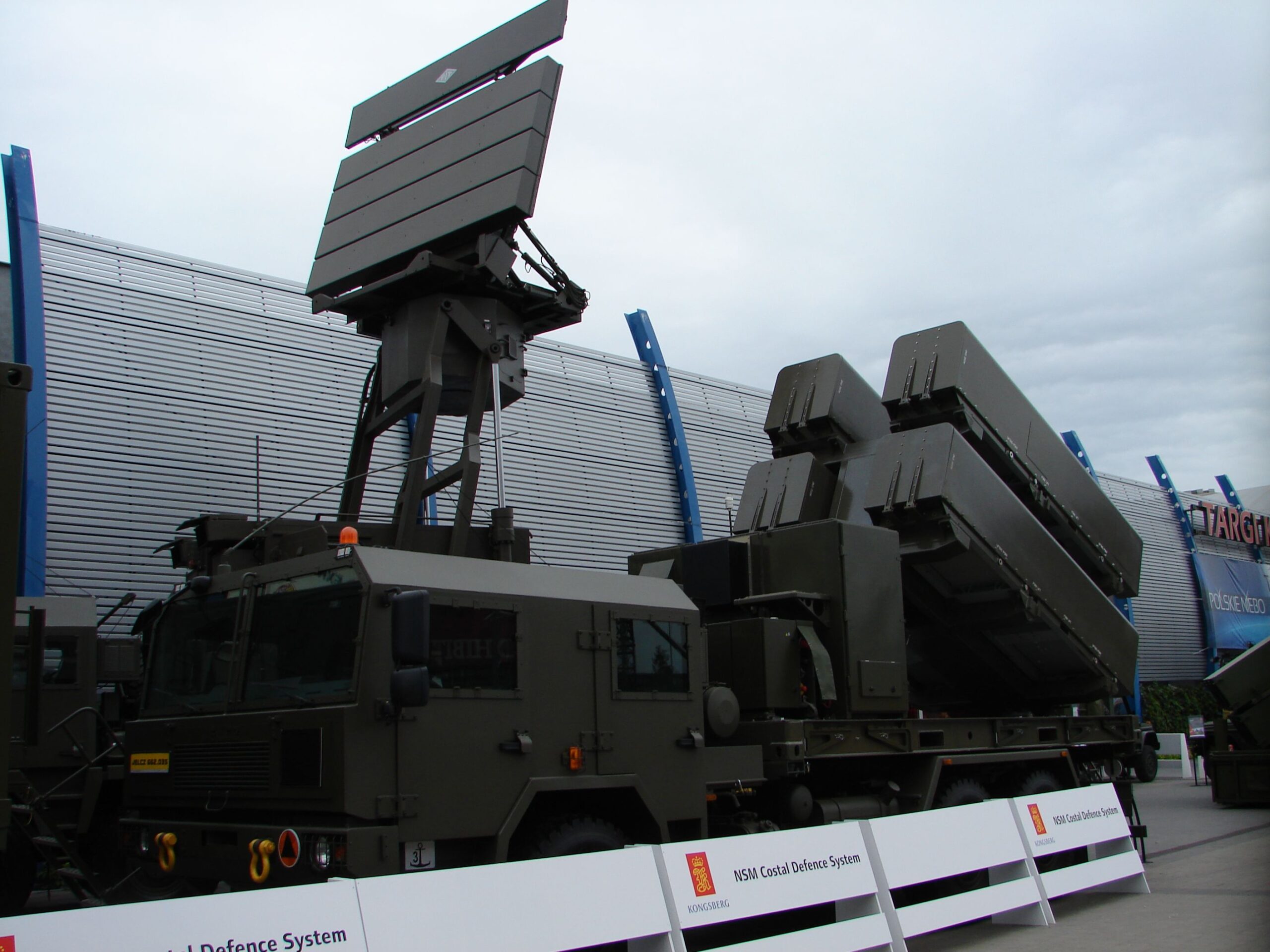
Without dedicated sensors, the Z-137 would be most effective during daylight hours, although night-vision goggles could offer a workaround. Ultimately, the missile-armed Z-137 could be integrated into Ukraine’s established drone tracking system, which incorporates acoustic sensors, human spotters, and radar information, already utilized by mobile fire teams and ground-based air defense units.
Where data connectivity is feasible, the Z-137 could be plugged into this comprehensive system or operate with ground-control intercept (GCI) via radio. This integration would significantly enhance its situational awareness and targeting accuracy.
The extensive scale of Russian drone activity necessitates a broad spectrum of air defense systems in Ukraine. This ranges from non-kinetic electronic warfare options to mobile fire teams armed with machine guns and searchlights, and up to long-range Patriot air defense systems.
While the Z-137 seen in the video is configured with R-73s, the aircraft could potentially be adapted to fire other missiles provided to Ukraine, such as the ASRAAM or U.S.-made AIM-9L/M Sidewinders, and even the more advanced AIM-9X, which Ukraine has also received.
Military equipment: Zlin Z-37 Čmelák
Name: Z-37 Čmelák
Caption: UK-registered Z-37A-2
Type: Agricultural aircraft
Manufacturer: Let Kunovice,Moravan
FirstFlight: 29 June 1963
Status: In use
PrimaryUser: Czechoslovak civilian aviation
Produced: 1965-1987
NumberBuilt: ~713
Categories: 1960s Czechoslovak agricultural aircraft, Aircraft first flown in 1963, Aircraft specs templates using more performance parameter, Aircraft with fixed conventional landing gear, All articles needing additional references, All articles with dead external links, All articles with unsourced statements, All articles with vague or ambiguous time, Articles needing additional references from August 2025, Articles with dead external links from July 2016, Articles with permanently dead external links, Articles with short description, Articles with unsourced statements from August 2025, CS1 German-language sources (de), CS1 maint: url-status, Commons category link is on Wikidata, Glider tugs, Low-wing aircraft, Short description is different from Wikidata, Single-engined piston aircraft, Single-engined tractor aircraft, Vague or ambiguous time from August 2025, Webarchive template wayback links, Zlín aircraft
Summary: The Zlin Z-37 Čmelák (Czech: “Bumblebee”), also known as LET Z-37 Čmelák is an agricultural aircraft which was manufactured in Czechoslovakia. It is powered by a Soviet-built Ivchenko reciprocating engine. The aircraft is used mainly as a cropduster.
Get more information about: Zlin Z-37 Čmelák
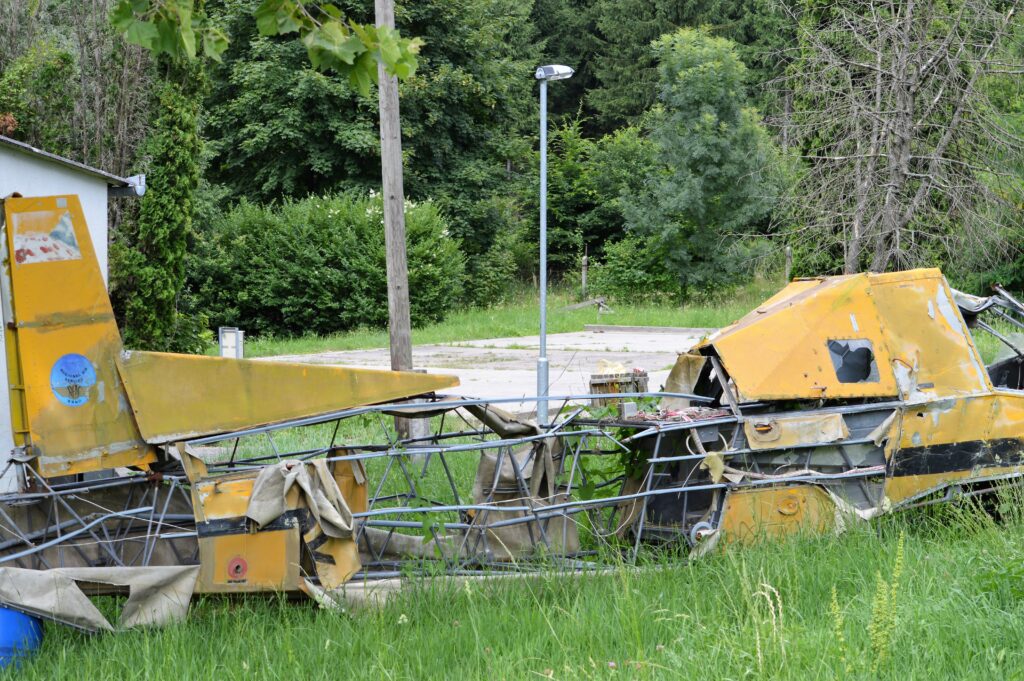
It is important to note that the operational status of this modified Agro Turbo is not yet confirmed; it may still be undergoing trials. It remains uncertain whether such a modification will be widely fielded. However, the precedent set by the Ukrainian Yak-52 primary training aircraft armed with a hand-held gun, used for hunting Russian reconnaissance UAVs, underscores the lengths Ukraine is willing to go to combat the drone menace.
The emergence of the missile-armed Z-137 reinforces the notion that Ukraine possesses significant stockpiles of R-73s, and that these missiles are deemed highly valuable for air defense due to their versatility across various platforms—be it air, land, or sea.
The R-73’s adaptability is further demonstrated by its incorporation into other Ukrainian “FrankenSAMs” or improvised air defense systems. These include the Gravehawk surface-to-air missile system, developed by the UK and Denmark, which fits inside a modified ISO shipping container.
Military equipment: Zlin Z-37 Čmelák
Name: Z-37 Čmelák
Caption: UK-registered Z-37A-2
Type: Agricultural aircraft
Manufacturer: Let Kunovice,Moravan
FirstFlight: 29 June 1963
Status: In use
PrimaryUser: Czechoslovak civilian aviation
Produced: 1965-1987
NumberBuilt: ~713
Categories: 1960s Czechoslovak agricultural aircraft, Aircraft first flown in 1963, Aircraft specs templates using more performance parameter, Aircraft with fixed conventional landing gear, All articles needing additional references, All articles with dead external links, All articles with unsourced statements, All articles with vague or ambiguous time, Articles needing additional references from August 2025, Articles with dead external links from July 2016, Articles with permanently dead external links, Articles with short description, Articles with unsourced statements from August 2025, CS1 German-language sources (de), CS1 maint: url-status, Commons category link is on Wikidata, Glider tugs, Low-wing aircraft, Short description is different from Wikidata, Single-engined piston aircraft, Single-engined tractor aircraft, Vague or ambiguous time from August 2025, Webarchive template wayback links, Zlín aircraft
Summary: The Zlin Z-37 Čmelák (Czech: “Bumblebee”), also known as LET Z-37 Čmelák is an agricultural aircraft which was manufactured in Czechoslovakia. It is powered by a Soviet-built Ivchenko reciprocating engine. The aircraft is used mainly as a cropduster.
Get more information about: Zlin Z-37 Čmelák
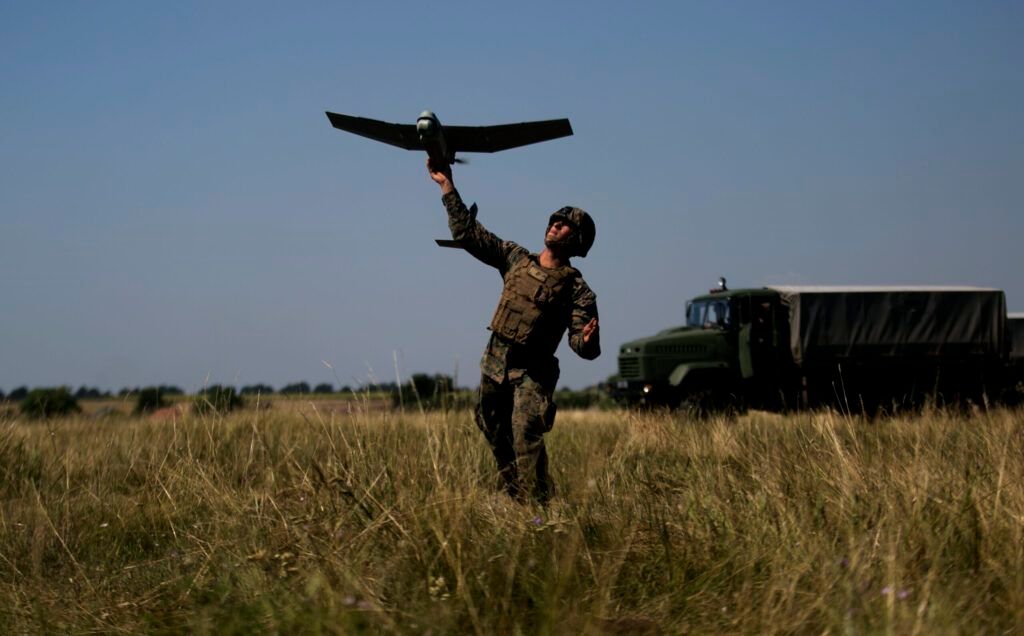
Additionally, Ukraine has fielded modified 9K33 Osa (SA-8 Gecko) wheeled air defense vehicles armed with R-73 missiles, replacing their usual 9M33 interceptors. The R-73 has also been deployed on Ukrainian uncrewed surface vessels (USVs), an application known as the Sea Dragon, as well as on a mobile surface-to-air missile system based on the American HMMWV platform, designated the Dragon H73 system.
The use of slow-moving aircraft for counter-drone operations is gaining traction globally. Israel has long utilized attack helicopters for this purpose, and the U.S. Army is exploring the potential of its AH-64 Apaches to engage uncrewed air systems, providing broader context for Ukraine’s Z-137 initiative.
While crewed fighter jets, particularly Ukrainian Air Force Su-27s and MiG-29s, regularly undertake counter-drone missions, an armed agricultural plane offers a different operational profile. It has a longer response time and less capability to rapidly engage multiple targets. However, it could be highly effective in a “picket” role, patrolling specific sectors of airspace, a mission type previously suggested for aircraft like the OA-1K.
Military equipment: 9K33 Osa
Name: NATO reporting name
Caption: Missile vehicle
Origin: Soviet Union
Type: Surface-to-air missile
IsVehicle: true
IsUk: true
Service: 1971–present
UsedBy: #Operators
Wars: Iran–Iraq War,1982 Lebanon War,Angolan Civil War,Western Sahara War,Gulf War,Russo-Georgian War,First Libyan Civil War,Syrian Civil War,2020 Armenian–Azerbaijani skirmishes,Second Nagorno-Karabakh War,Russo-Ukrainian War,2025 India-Pakistan conflict
Designer: NII-20
DesignDate: 1960–1972
Manufacturer: Znamya Truda Plant
ProductionDate: 1970–1988
Number: 1,200
Variants: OSA-A, OSA-AK, OSA-AKM, OSA-M
SpecLabel: OSA-AKM
Weight: tonne
Length: cvt
Width: cvt
Height: cvt
Crew: 5 soldiers
PrimaryArmament: 6 9M33, 9M33M1, 9M33M2 or 9M33M3 missiles
Engine: D20K300 diesel
Clearance: cvt
VehicleRange: cvt
Speed: cvt,cvt
Categories: All articles needing additional references, All articles with unsourced statements, Articles containing Russian-language text, Articles needing additional references from July 2025, Articles with short description, Articles with unsourced statements from July 2008, CS1 Azerbaijani-language sources (az), CS1 Polish-language sources (pl), CS1 Russian-language sources (ru), CS1 maint: numeric names: authors list, Cold War surface-to-air missiles of the Soviet Union, Commons category link from Wikidata, Military vehicles introduced in the 1970s, Self-propelled anti-aircraft weapons, Self-propelled anti-aircraft weapons of the Soviet Union, Short description is different from Wikidata, Surface-to-air missiles of the Soviet Union, Use dmy dates from February 2020, Webarchive template wayback links
Summary: The 9K33 Osa (Russian: 9К33 «Оса»; English: “wasp”; NATO reporting name SA-8 Gecko) is a highly mobile, low-altitude, short-range tactical surface-to-air missile system developed in the Soviet Union in the 1960s and fielded in 1972. Its export version name is Romb.
Get more information about: 9K33 Osa
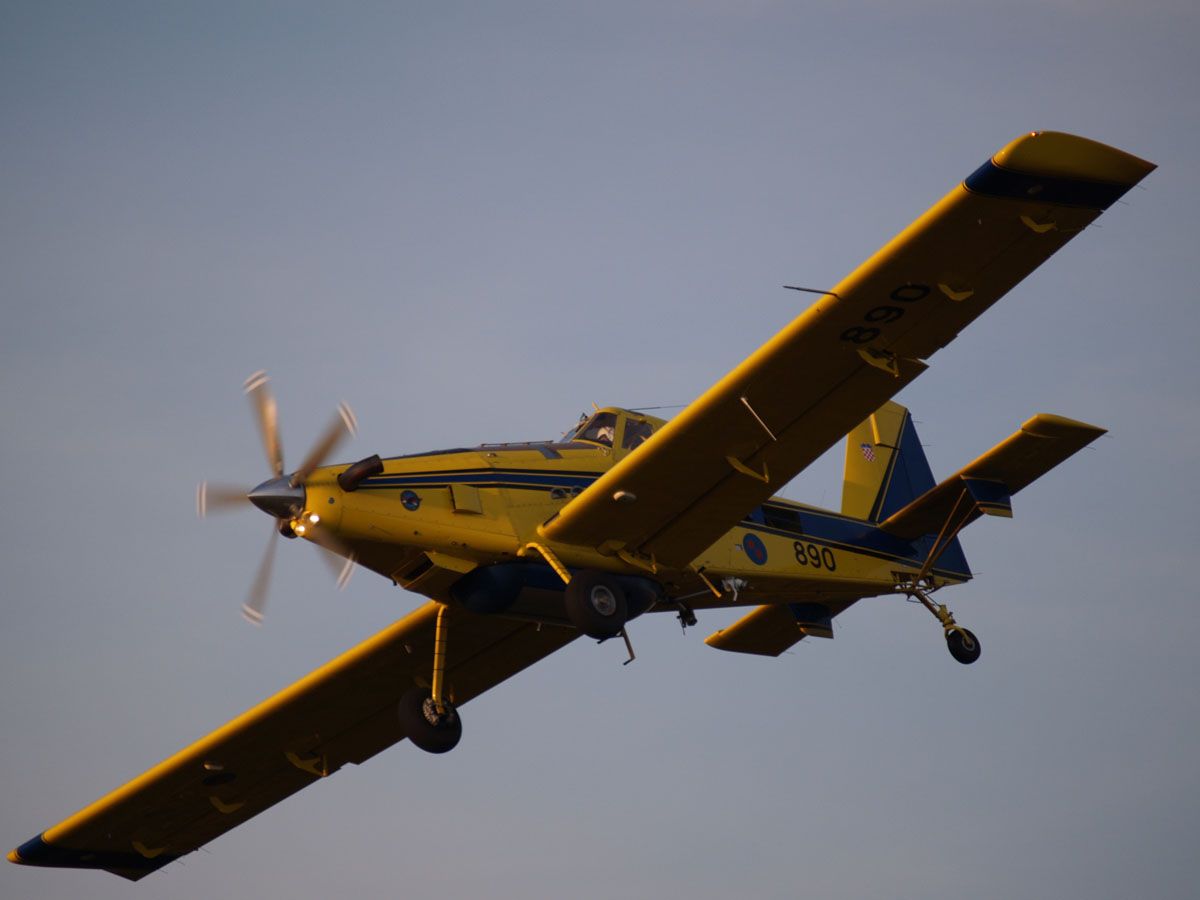
The sight of a missile-armed crop duster over the Ukrainian plains serves as a stark reminder of Ukraine’s urgent and continuous need for diverse air defenses. While Western allies have provided highly capable air defense systems, these are limited in number and optimally employed against higher-tier threats.
As Russia maintains its drone bombardment campaigns, platforms like the Z-137, armed with readily available R-73s, offer a crucial and effective stopgap measure. This ongoing innovation underscores Ukraine’s determined efforts to defend its skies through resourceful and often ingenious adaptations of existing assets, civilian or military.
Military equipment: AGM-114 Hellfire
Name: AGM-114 Hellfire
Caption: A model of Longbow Hellfire’s components
Origin: United States
Type: Air-to-surface missile
IsMissile: true
Wars: Gulf War,War on Terror,Russian Invasion of Ukraine
Manufacturer: Lockheed Martin,Boeing
UnitCost: undefined
Propellant: APC/HTPB
ProductionDate: 1974–present
Service: 1984–present
Engine: Thiokol
Publisher: National Defence University, Fort McNair, Washington, DC
Quote: The component that … propels the Hellfire is the Thiokol TX-657.
Url: https://es.ndu.edu/Portals/75/Documents/industry-study/reports/2014/es-is-report-weapons-2014.pdf
First1: Andreas
Last1: Parsch
Title: Spring 2014 Industry Study
ArchiveUrl: https://ghostarchive.org/archive/20221009/https://es.ndu.edu/Portals/75/Documents/industry-study/reports/2014/es-is-report-weapons-2014.pdf
ArchiveDate: Sat Oct 08 2022 17:00:00 GMT-0700 (Pacific Daylight Time)
UrlStatus: live
Pages: Solid-fuel rocket
Weight: convert
Length: 64 in
Abbr: on
Diameter: 7 in
Wingspan: 13 in
Speed: 995 mph
Disp: semicolon)
VehicleRange: 0.5 to
Order: flip
Filling: High-explosive anti-tank,Shaped charge,Tandem-charge,Metal augmented charge,Fragmentation (weaponry)
Guidance: ubl
LaunchPlatform: fixed-wing aircraft,unmanned combat aerial vehicle
Categories: Air-to-surface missiles of the United States, All Wikipedia articles written in American English, All articles needing additional references, Anti-ship missiles of Sweden, Anti-tank guided missiles of the Cold War, Anti-tank guided missiles of the United States, Articles containing video clips, Articles needing additional references from January 2016, Articles with short description, CS1 Hebrew-language sources (he), CS1 Swedish-language sources (sv), Commons category link from Wikidata, Fire-and-forget weapons, Lockheed Martin, Military equipment introduced in the 1980s, Short description is different from Wikidata, Thermobaric weapons, Use American English from March 2019, Use dmy dates from December 2019, Webarchive template wayback links
Summary: The AGM-114 Hellfire is an American missile developed for anti-armor use, later developed for precision drone strikes against other target types, especially high-value targets. It was originally developed under the name “Heliborne laser, fire-and-forget missile”, which led to the colloquial name “Hellfire” ultimately becoming the missile’s formal name. It has a multi-mission, multi-target precision-strike ability and can be launched from multiple air, sea, and ground platforms, including the MQ-1 Predator and MQ-9 Reaper. The Hellfire missile is the primary 100-pound (45 kg) class air-to-ground precision weapon for the armed forces of the United States and many other countries. It has also been fielded on surface platforms in the surface-to-surface and surface-to-air roles.
Get more information about: AGM-114 Hellfire
This novel air defense solution against smaller weapons demonstrates remarkable adaptation. Ukraine continues to develop and deploy these unique systems, showcasing an unwavering resolve to protect its territory against the evolving threats of modern warfare, one repurposed crop duster at a time.



